20 Houseplants You Can Easily Propagate in Just a Cup of Water
Houseplants are a wonderful way to bring life to your home, and propagating them is simpler than you may think. You do not need any special tools- just a basic cup of water. Many houseplants can be easily propagated this way, providing a fun way to grow your plant collection. With just a few simple steps, you can begin growing new plants from the ones you already own. Here are some houseplants you can easily propagate in a cup of water.
This post may contain affiliate links, which helps keep this content free. Please read our disclosure for more info.
Pothos (Epipremnum aureum)
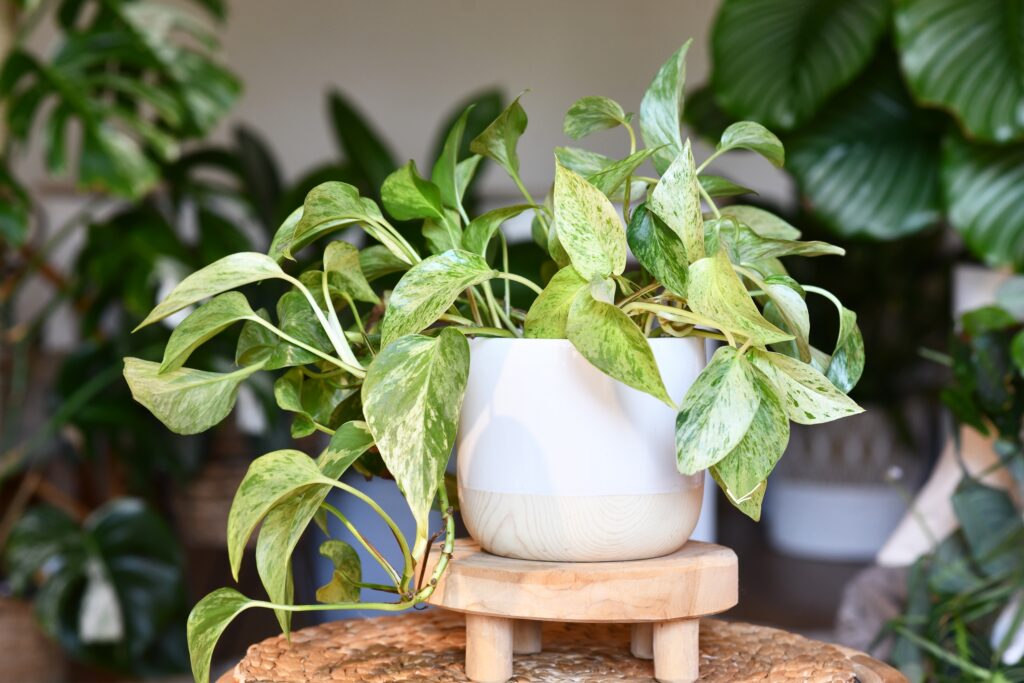
Pothos is a popular houseplant native to Southeast Asia and the South Pacific. It is known for its ability to thrive in various conditions, making it a great choice for beginners. Pothos is an evergreen perennial that can live for many years with proper care. It grows best in moderate to bright indirect light, but can also adapt to low light conditions, although it may grow more slowly
To grow pothos, place it in well-draining soil and water it when the top inch of the soil feels dry. Pothos prefers a warm environment and can tolerate some neglect when it comes to watering. This plant can be propagated easily in water, making it a great option for expanding your collection. It can also be trained to climb or trail, making it a versatile addition to your home decor.
Spider Plant (Chlorophytum comosum)
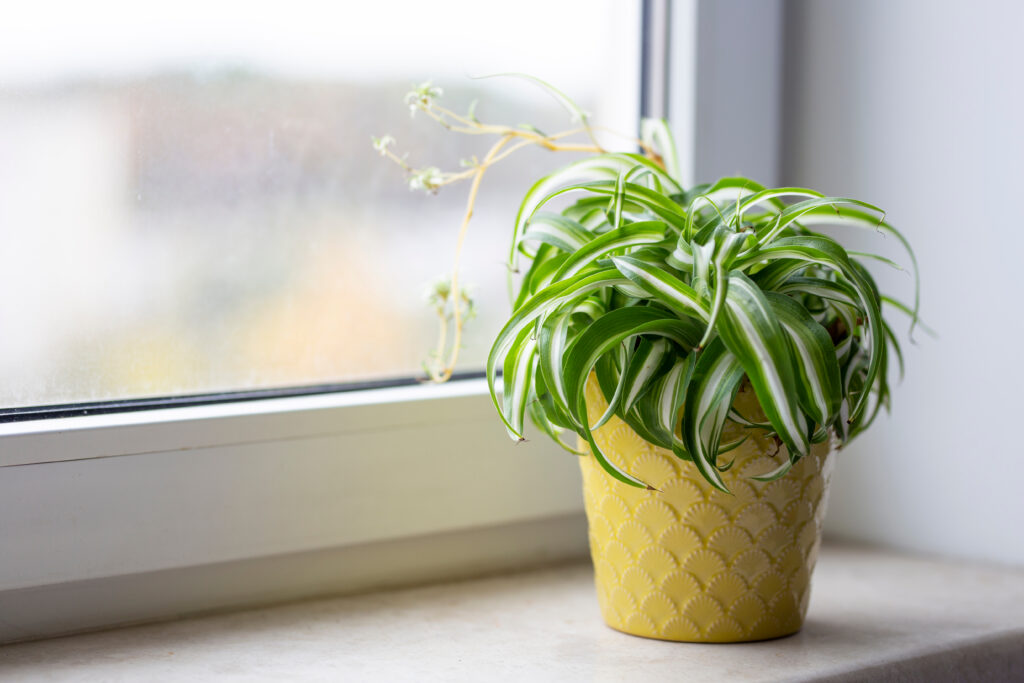
Spider plants are native to southern Africa and are known for their air-purifying qualities. They are long-living perennials that can thrive for many years, often growing up to 2 feet in length. Spider plants are known for their arching green leaves with white stripes, and they can produce babies or offshoots that can be easily propagated. These plants are particularly resilient and can tolerate a variety of conditions.
Spider plants grow best in indirect light and prefer slightly moist soil. They are relatively low-maintenance and require watering when the soil feels dry, but be careful not to overwater, as they are susceptible to root rot. Spider plants also prefer temperatures between 60-75 degrees F and can be grown in a pot or hanging basket for a unique look. Regular trimming of the plant will help it maintain its shape and encourage new growth.
Snake Plant (Sansevieria trifasciata)

Snake plants are native to West Africa and are one of the most durable houseplants. This hardy plant can live for many years, with some plants even living for over a decade if well-cared for. Snake plants have thick, upright leaves that are green with yellow edges, and they can grow to about 3-4 feet tall. They are excellent air purifiers, making them a popular choice for indoor environments.
Snake plants are very easy to care for, requiring only occasional watering and thriving in low to moderate light conditions. They prefer well-draining soil and should only be watered when the soil is completely dry, as they are drought-tolerant. Snake plants can be propagated by dividing their rhizomes or by cutting a leaf into sections and rooting it in water. They are a great choice for both beginners and experienced gardeners due to their resilience.
ZZ Plant (Zamioculcas zamiifolia)
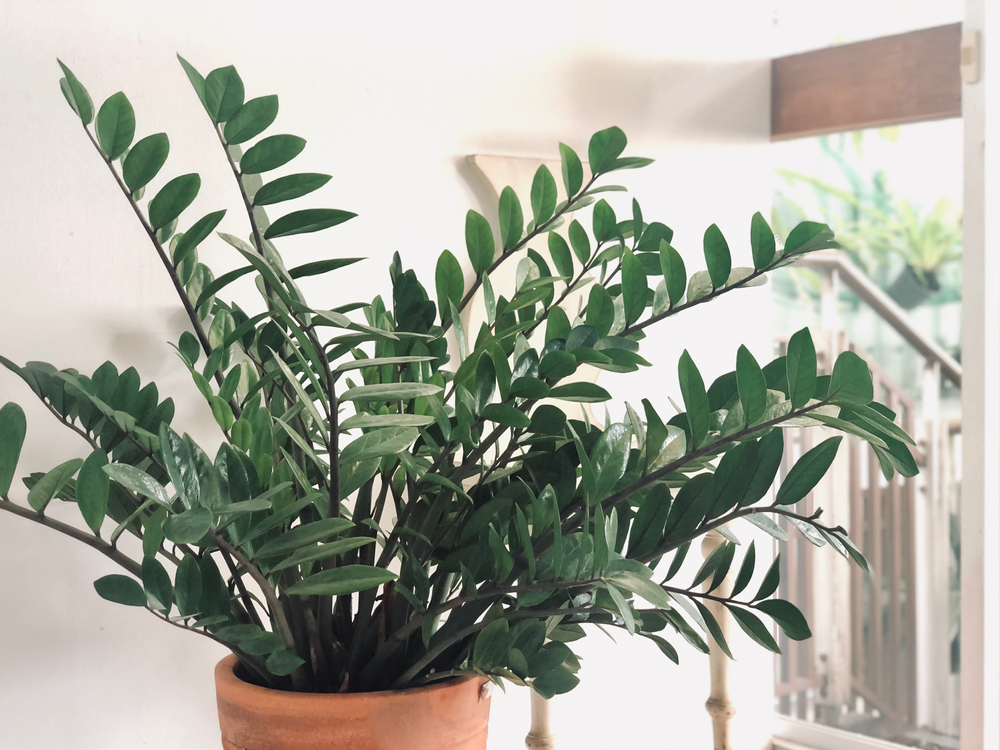
The ZZ plant is native to eastern Africa, specifically Kenya and Tanzania. This plant is known for its waxy, glossy green leaves and its ability to thrive in low-light environments. ZZ plants can live for several years and are perfect for those who may not have a green thumb. Their long-lasting foliage and tolerance to neglect make them one of the most popular houseplants.
To grow a ZZ plant, place it in a pot with well-draining soil and water it sparingly, as it is drought-tolerant. It can survive in low light, but it will grow more vigorously in bright, indirect light. ZZ plants prefer temperatures between 60-75 degrees F and can be propagated by dividing the rhizomes. This plant is an excellent option for offices or homes with less natural light.
Aloe Vera (Aloe barbadensis miller)

Aloe vera is a succulent native to North Africa and the Arabian Peninsula. This perennial plant is known for its thick, fleshy leaves, which contain a gel that is often used for skin care and healing. Aloe vera can live for several years with proper care and is a great plant for beginners due to its minimal maintenance needs. It thrives in warm, dry conditions and can tolerate neglect when it comes to watering.
Aloe vera requires well-draining soil and should be watered deeply but infrequently, allowing the soil to dry out completely between waterings. It prefers bright, indirect light and should not be placed in direct sunlight for extended periods, as this can cause the leaves to burn. Aloe vera can be easily propagated by removing the offsets or pups that grow at the base of the plant. It is a versatile plant that not only serves as a decorative piece but also has medicinal uses.
Peace Lily (Sathiphyllum)
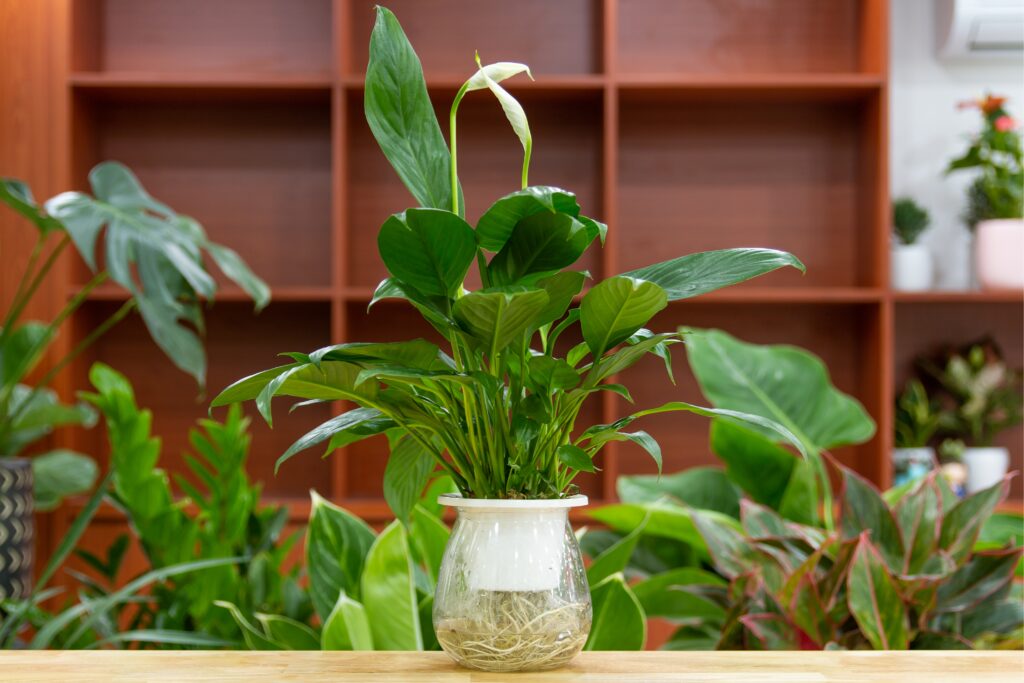
Peace lilies are native to tropical regions of the Americas and Southeast Asia. These perennial plants are known for their elegant white flowers and dark green foliage. Peace lilies can live for many years and thrive in indoor environments, making them a popular choice for houseplants. They are also excellent air purifiers, removing toxins from the air.
Peace lilies grow best in moderate to low light and prefer consistently moist soil. They can be watered when the top inch of the soil feels dry, but be sure not to let them sit in water for extended periods, as they are prone to root rot. Peace lilies should be placed in temperatures between 65-80 degrees F and can be propagated by dividing the root ball. Regular pruning of spent flowers and leaves helps maintain the plant’s health and appearance.
English Ivy (Hedera helix)
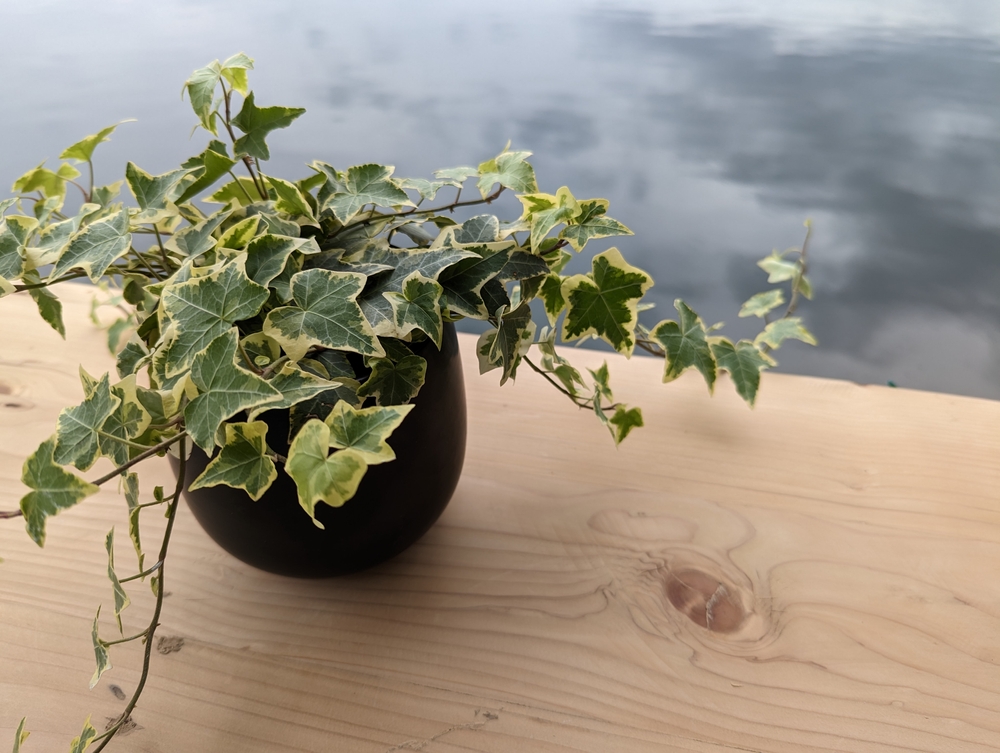
English ivy is native to Europe and western Asia and is known for its trailing vines and glossy, evergreen leaves. It is a fast-growing perennial that can live for many years and is often used as a ground cover or indoor vine. English ivy thrives in moderate to bright indirect light, but it can also tolerate lower light conditions. It is particularly effective in purifying the air, making it a great addition to your home.
To grow English ivy, plant it in well-draining soil and water it regularly, but allow the soil to dry out slightly between waterings. This plant prefers cooler temperatures and can tolerate a variety of humidity levels. English ivy can be propagated easily by cutting a healthy vine and rooting it in water or soil. Regular trimming helps keep the vines under control and prevents them from becoming too unruly.
Philodendron

Philodendrons are native to the tropical regions of the Americas and are known for their heart-shaped leaves and vining growth habit. These plants are long-lived and can thrive indoors for several years with proper care. Philodendrons are particularly well-suited for beginners due to their tolerance for low light and low maintenance requirements. They grow best in humid environments and can be placed in a bathroom or kitchen for optimal growth.
Philodendron grows in well-draining potting mix and water it when the top inch of soil is dry. They prefer bright, indirect light but can adapt to lower light conditions, although their growth may slow. Philodendrons are easily propagated by taking stem cuttings and rooting them in water or soil. Pruning can help maintain the plant’s shape and encourage new growth.
Monstera Deliciosa

Monstera deliciosa, also known as the Swiss cheese plant, is native to the rainforests of Central America. It is a fast-growing vine that can live for many years and is known for its large, unique leaves with natural holes. Monstera thrives in bright, indirect light and is ideal for adding a tropical touch to your home. As it matures, the plant can grow large, making it a statement piece in any room.
To grow Monstera deliciosa, plant it in well-draining soil and water it when the top 1-2 inches of soil feel dry. This plant prefers warm temperatures between 65-85 degrees F and can tolerate a range of humidity levels. It can be propagated easily by cutting a stem with at least one node and rooting it in water or soil. Monstera can also be trained to climb or allowed to trail, adding versatility to its appearance.
Fiddle Leaf Fig (Ficus lyrata)
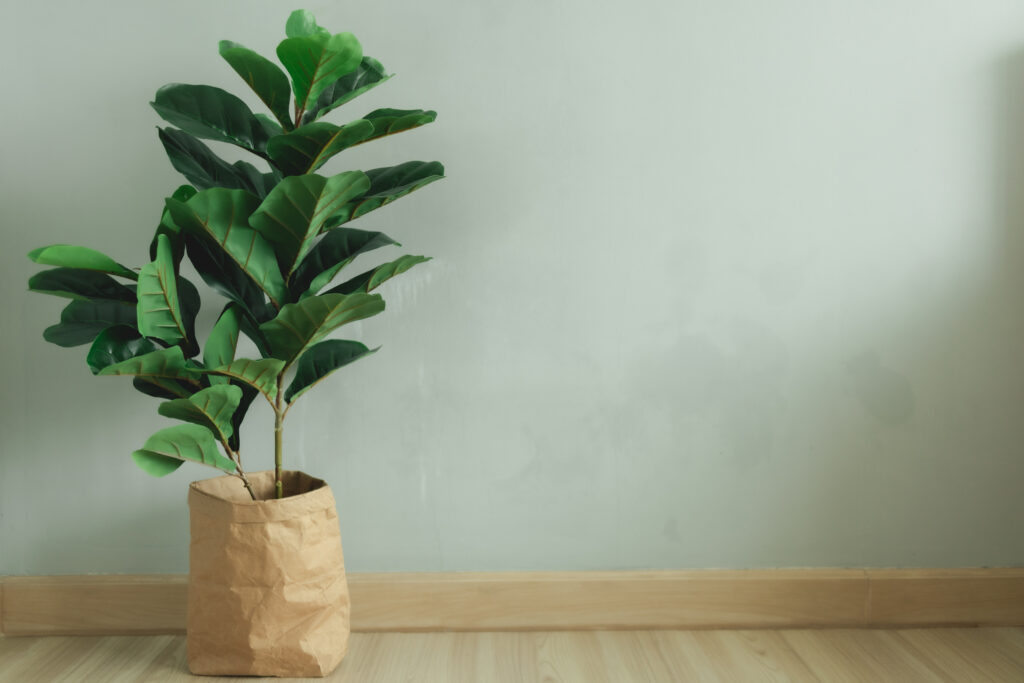
The fiddle leaf fig is a native tree of West Africa known for its large, violin-shaped leaves. It is a popular indoor plant that can live for several years and is often used as a statement piece due to its striking appearance. This plant grows best in bright, indirect light and can reach up to 10 feet tall when given the proper care. Fiddle leaf figs require consistent care, including regular watering and proper humidity levels.
Fiddle leaf fig should be placed in well-draining soil and watered when the top inch of the soil is dry. It prefers warm temperatures and should be placed in a location with bright, indirect light. Fiddle leaf figs can be propagated by taking stem cuttings and rooting them in water or soil. Regular dusting of the leaves and occasional pruning help keep the plant healthy and attractive.
African Violet (Saintpaulia)
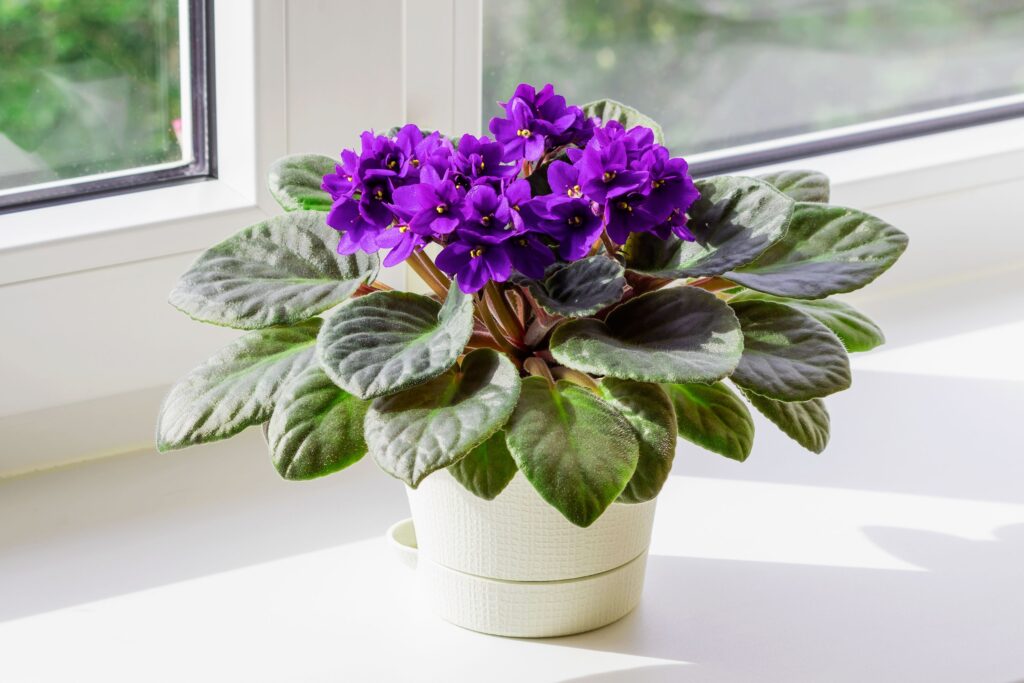
African violets are native to East Africa and are known for their beautiful, colorful flowers and velvety leaves. These compact plants can live for several years and thrive in indoor environments. African violets are particularly suitable for homes with limited space, as they grow best in small pots. They prefer bright, indirect light and can bloom year-round if given the proper care.
To grow an African violet, plant it in a well-draining mix designed for violets and water it carefully, avoiding water on the leaves to prevent rot. This plant prefers a warm environment and high humidity levels, so misting or placing it on a humidity tray can be beneficial. African violets can be propagated by leaf cuttings, which can be rooted in water or soil. Regular deadheading of spent flowers encourages continuous blooming.
Begonia

Begonias are native to tropical and subtropical regions and are known for their ornamental leaves and vibrant flowers. These plants can live for several years with proper care, and they grow best in warm, humid environments. Begonias prefer indirect light, making them suitable for indoor spaces with moderate to low sunlight. Their beautiful, textured foliage adds a touch of elegance to any room.
Plant them in well-draining soil and water them regularly, ensuring that the soil remains slightly moist but not soggy. They prefer temperatures between 60-75 degrees F and should be kept away from cold drafts. Begonias can be propagated by leaf cuttings, which can root in water or soil. Regular trimming of the flowers and leaves helps maintain the plant’s appearance.
Jade Plant (Crassula ovata)
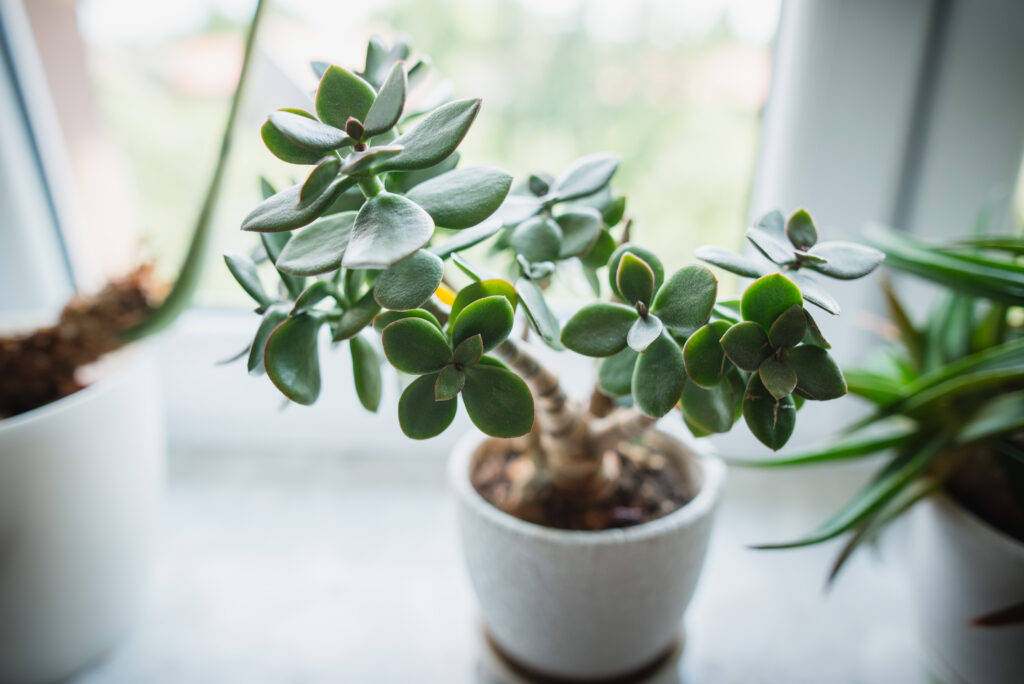
The jade plant is a succulent native to South Africa, known for its thick, fleshy green leaves and tree-like appearance. This plant is long-lived and can thrive for many years with proper care. Jade plants grow best in bright, indirect light and are perfect for adding a touch of greenery to a windowsill or desk. They are also known for their ability to store water in their leaves, making them drought-tolerant.
To grow a jade plant, use a well-draining succulent or cactus mix and water it sparingly, allowing the soil to dry out completely between waterings. It prefers warm temperatures and should be kept away from frost. Jade plants can be propagated by stem or leaf cuttings, which can be rooted in soil. They require minimal maintenance and are perfect for gardeners who prefer low-effort plants.
Cast Iron Plant (Aspidistra elatior)

The cast iron plant is native to East Asia and is known for its toughness and resilience in difficult conditions. This plant can live for many years and is ideal for homes with low light and varying humidity levels. The cast iron plant’s dark green, leathery leaves make it a unique addition to your indoor garden. It is an excellent choice for beginners or anyone looking for a low-maintenance plant.
Place the plant in well-draining soil and water it when the top of the soil feels dry. It tolerates low light, but it will grow best with moderate to indirect light. The plant prefers temperatures between 60-75 degrees F and should be kept away from cold drafts. Cast iron plants can be propagated by dividing the root ball, making it easy to create new plants for your home.
Christmas Cactus (Schlumbergera)

Christmas cacti are native to Brazil and are known for their colorful, tubular flowers that bloom around the holiday season. These plants are relatively easy to care for and can live for many years with proper attention. Christmas cacti prefer bright, indirect light and a slightly cooler environment during their blooming period. They are unique in that they bloom during the winter months, adding a pop of color during the holidays.
Plant Christmas Cactus in a well-draining soil mix and water it when the top inch of soil is dry. This plant prefers cooler temperatures (50-60 degrees F) during the blooming period, and its roots should not be overwatered. Christmas cacti can be propagated by cutting a segment of a stem and allowing it to callous over before planting it in soil. Regular watering and occasional fertilizing will help promote healthy growth and vibrant blooms.
Sweet Potato Vine (Ipomoea batatas)

Sweet potato vines are native to Central and South America and are known for their trailing, heart-shaped leaves. This fast-growing plant can live for several years, often used as a ground cover or hanging plant in gardens and homes. It thrives in full sun and well-drained soil and can be grown both indoors and outdoors. The vibrant foliage of the sweet potato vine can add a splash of color to any space.
Place sweet potato vine in a location that receives full sun for at least 4-6 hours per day. It prefers well-drained soil and should be watered regularly, but ensure that the soil does not become soggy. The plant can be propagated by taking cuttings and rooting them in water. Sweet potato vines can be used as a beautiful, low-maintenance addition to your home or garden.
Chinese Evergreen (Aglaonema)

Chinese evergreens are native to Southeast Asia and are known for their attractive, variegated leaves in shades of green, silver, and red. They are perfect for indoor environments and can live for many years with proper care. These low-maintenance plants thrive in low to moderate light and can tolerate a range of temperatures, making them ideal for offices and homes. Their air-purifying properties make them an excellent choice for improving indoor air quality.
Plant it in well-draining potting mix and water when the top of the soil feels dry. They do best in temperatures between 65-75 degrees F and should not be exposed to drafts or direct sunlight. Chinese evergreens can be propagated by dividing the root ball or by taking stem cuttings. This plant is ideal for those who want a hardy, easy-to-care-for houseplant.
Calathea (Calathea spp.)
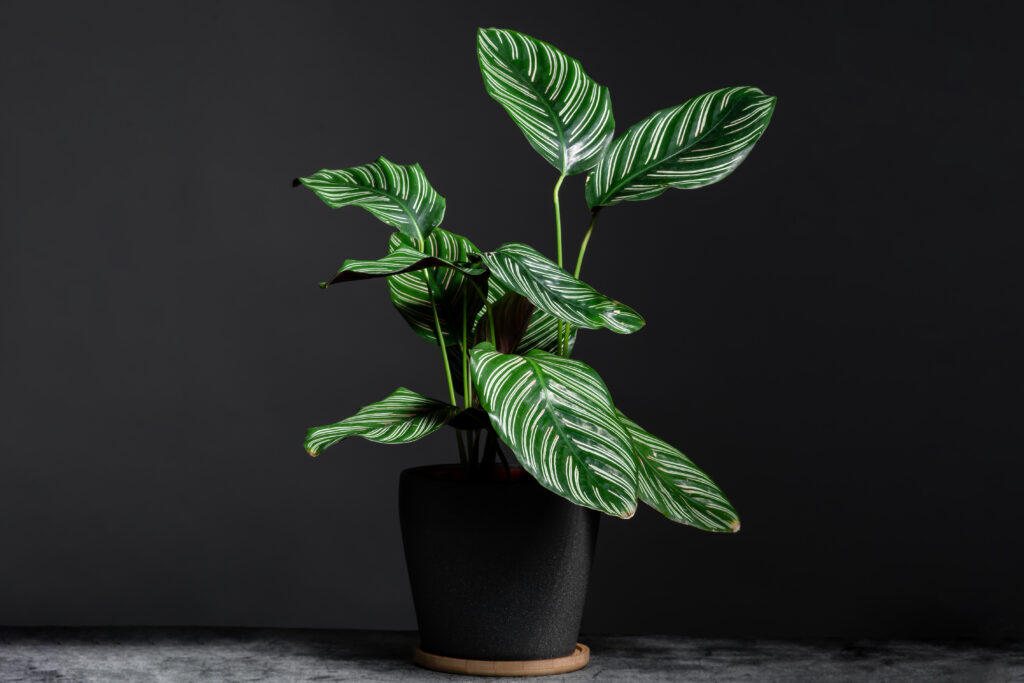
Native to the tropical regions of South and Central America, Calatheas are known for their beautiful, patterned leaves. They can live for many years with proper care and thrive in indoor spaces with low to moderate light. Calatheas are particularly appreciated for their decorative foliage, which adds an elegant touch to any room. These plants are sensitive to dry air and need a humid environment to thrive.
To grow Calatheas, plant them in well-draining, peat-based soil and keep the soil consistently moist, but not waterlogged. They prefer indirect light and temperatures between 65-80 degrees F. Calatheas should be watered with distilled or non-chlorinated water to avoid leaf browning. These plants can be propagated by division, and regular misting or placing them on a humidity tray will ensure their health and vibrancy.
Rubber Plant (Ficus elastica)
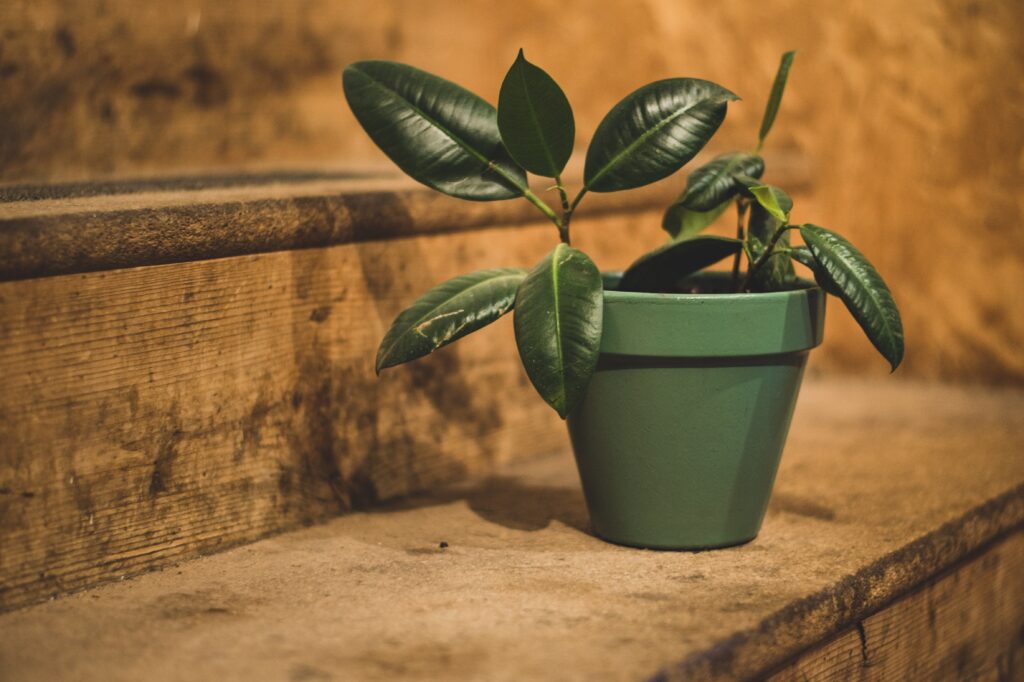
Rubber plants are native to Southeast Asia and are known for their glossy, dark green leaves that can grow quite large. They are durable and can live for many years, making them a great choice for those looking for a long-term indoor plant. Rubber plants grow best in bright, indirect light and are known for their ability to purify the air. They can reach impressive heights if allowed to grow, making them a striking feature in any room.
Place the rubber plants in well-draining soil and water them when the top inch of the soil is dry. They prefer temperatures between 60-80 degrees F and can tolerate a variety of humidity levels. Rubber plants can be propagated by stem cuttings, which root easily in water or soil. Pruning the plant regularly helps to maintain its shape and encourages branching, resulting in a fuller, more attractive plant.
String of Pearls (Senecio rowleyanus)
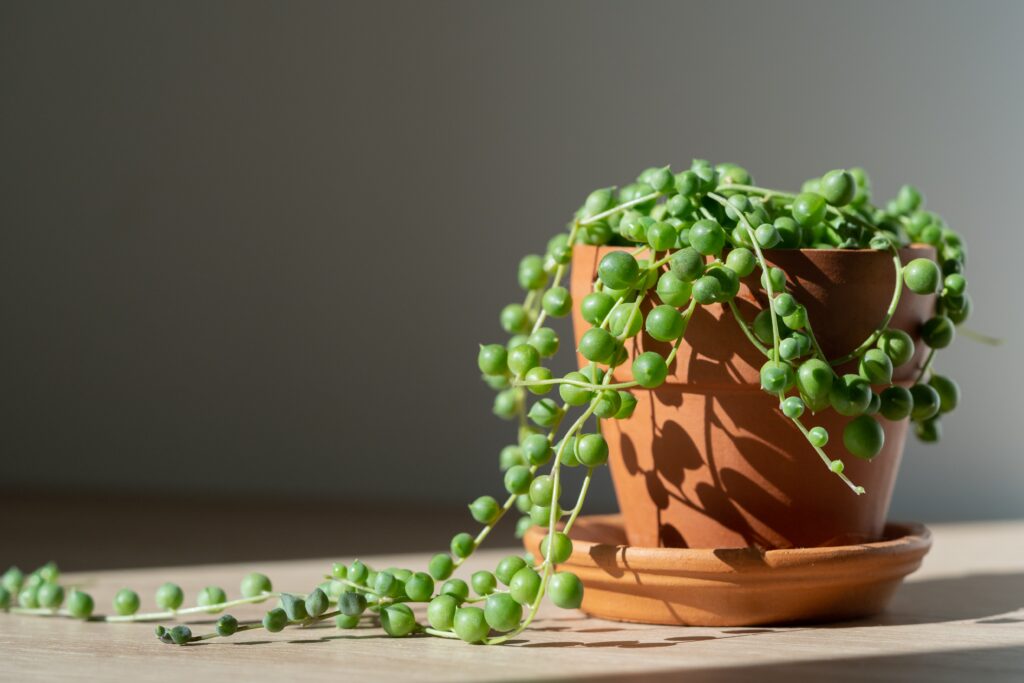
The string of pearls is a unique succulent native to southwest Africa. It is known for its trailing stems adorned with small, round beads that resemble pearls, making it a highly decorative houseplant. This plant is ideal for those with limited space as it can be grown in hanging baskets or pots. The string of pearls is a low-maintenance plant that thrives in dry, arid conditions and is perfect for beginner gardeners.
To grow a string of pearls, plant it in a well-draining cactus or succulent mix and water it sparingly. It thrives in bright, indirect light but can tolerate some direct sunlight. The plant should be watered only when the soil is completely dry, as it is highly drought-tolerant. String of pearls can be propagated by cutting the trailing vines and rooting them in soil or water. Regular pruning helps maintain the plant’s shape and encourages healthy growth.
This article originally appeared on Avocadu.
